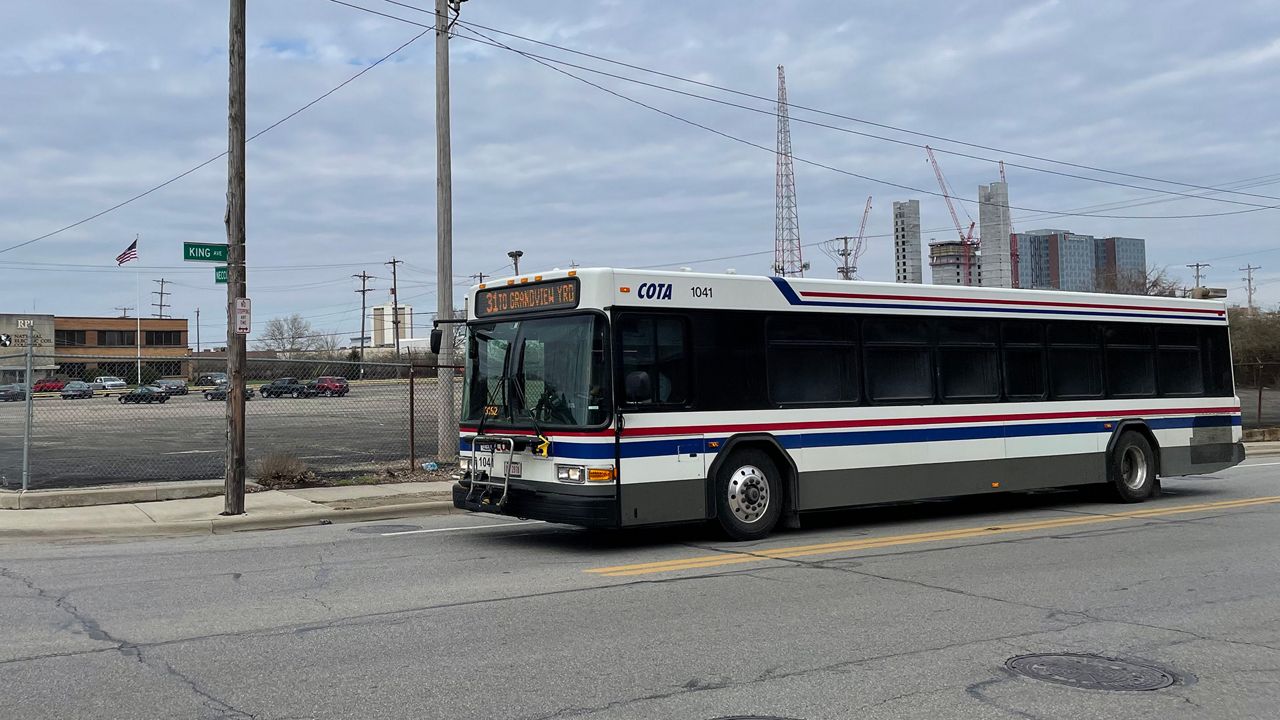COLUMBUS, Ohio — The Central Ohio Transit Authority received a $26.7 million Low or No Emission grant from the Federal Transit Administration.
The grant is to assist COTA with sustainability goals including the reduction of green house gas emissions by funding the purchase or leasing of U.S. built low-or-no-emission vehicles, related equipment or facilities.
“This investment will allow COTA to replace 28 diesel transit vehicles with battery-electric transit vehicles, supporting our efforts to have a fully no- or low-emission fleet by 2025 and achieve carbon neutrality by 2045,” said Joanna M. Pinkerton, President/CEO of COTA in a news release. “These electric vehicles will operate across Central Ohio, ensuring we do our part to provide the public health benefits of clean-fuel transportation."
In 2013, COTA began to transition its fleet to compressed natural gas and replacing diesel vehicles. The shift has led to an 11% reduction in greenhouse gas emissions for the fleet. The transition means a 73% reduction in particle pollution.
Through working with the EPA COTA can calculate a benefit of about $10 million to Franklin County through the reduction of particle pollution since 2013.
COTA plans to only purchase zero-emission vehicles for its fixed-route service moving forward according to the release. By the end of 2022 COTA will have 10 electric transit vehicles with 14 arriving in 2023 and and 14 in 2024. Starting in 2025, COTA will purchase 28 electric transit vehicles each year.
"We appreciate the work done by our congressional delegation in supporting COTA in our role to help our community pivot towards a safer, sustainable future,” Pinkerton said in the release.
COTA's goal is to achieve net-greenhouse gas emissions by 2045 and continues to explore other zero-emission technologies such as hydrogen fuel cell vehicles.
“When a transit door opens, whether it is a bus, train, or ferry, it is a great equalizer for everyone in our nation,” said FTA Administrator Nuria Fernandez in the release.
Fernandez recently visited COTA and took a tour of the West Broad Street Corridor on one of COTA’s new battery electric coaches.
“With this tremendous amount of funding, President Joe Biden’s Bipartisan Infrastructure Law gives more Americans access to the opportunities that transit creates, more often, in more places," Fernandez said. "These investments also help us meet our goals of cutting transportation emissions, creating good-paying American manufacturing jobs, and helping America’s transit workers prepare for new vehicle technology.”



